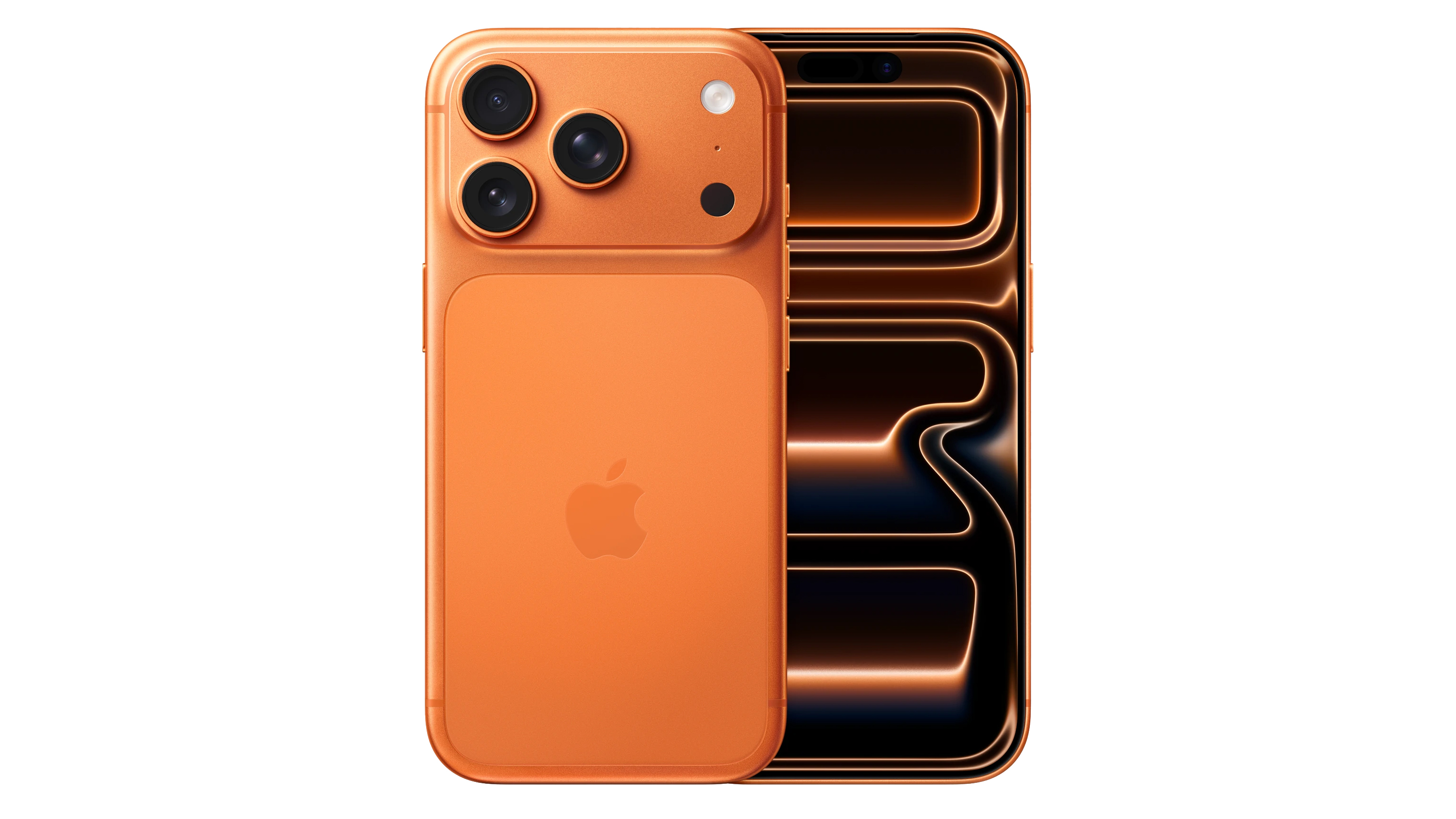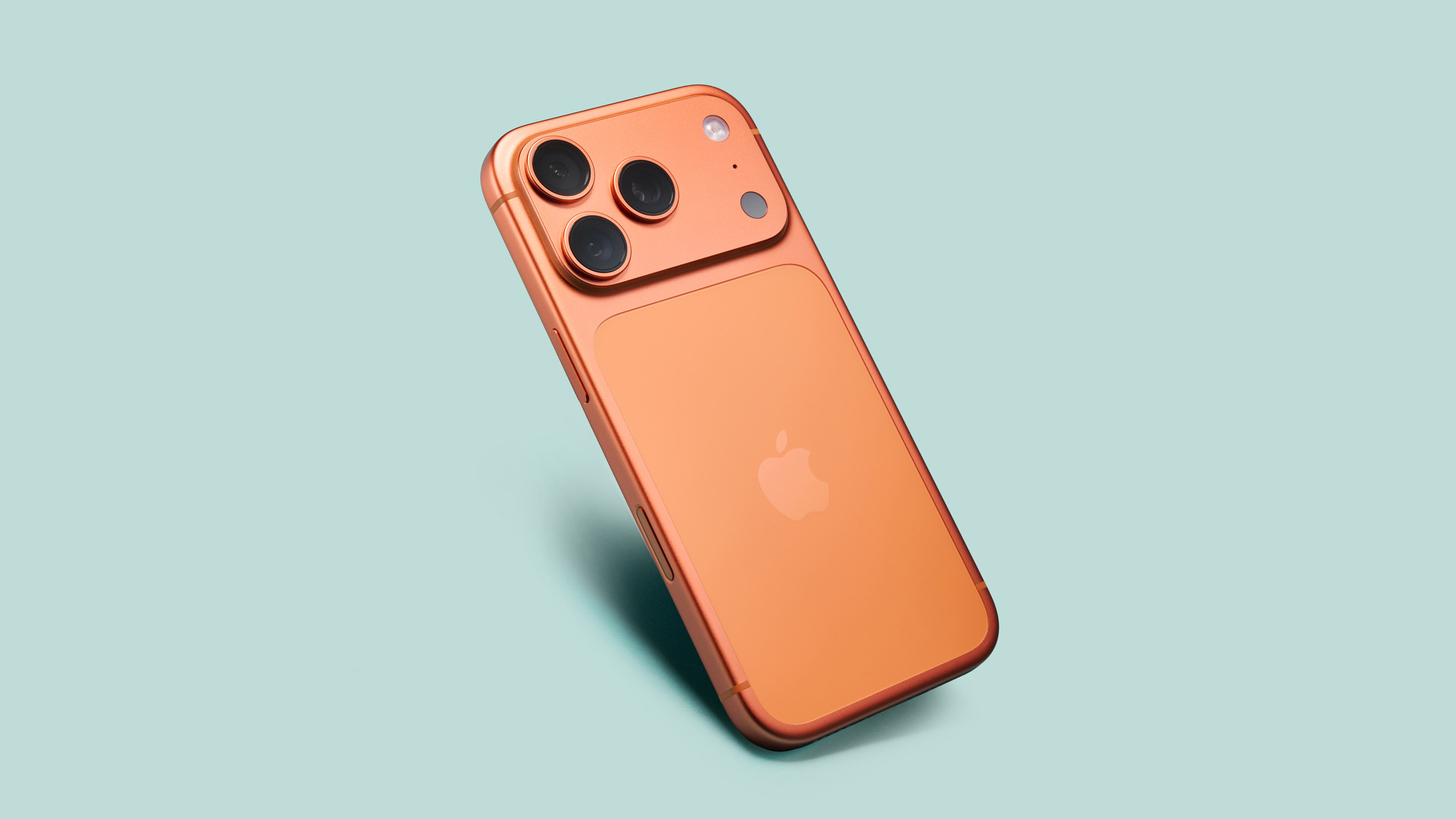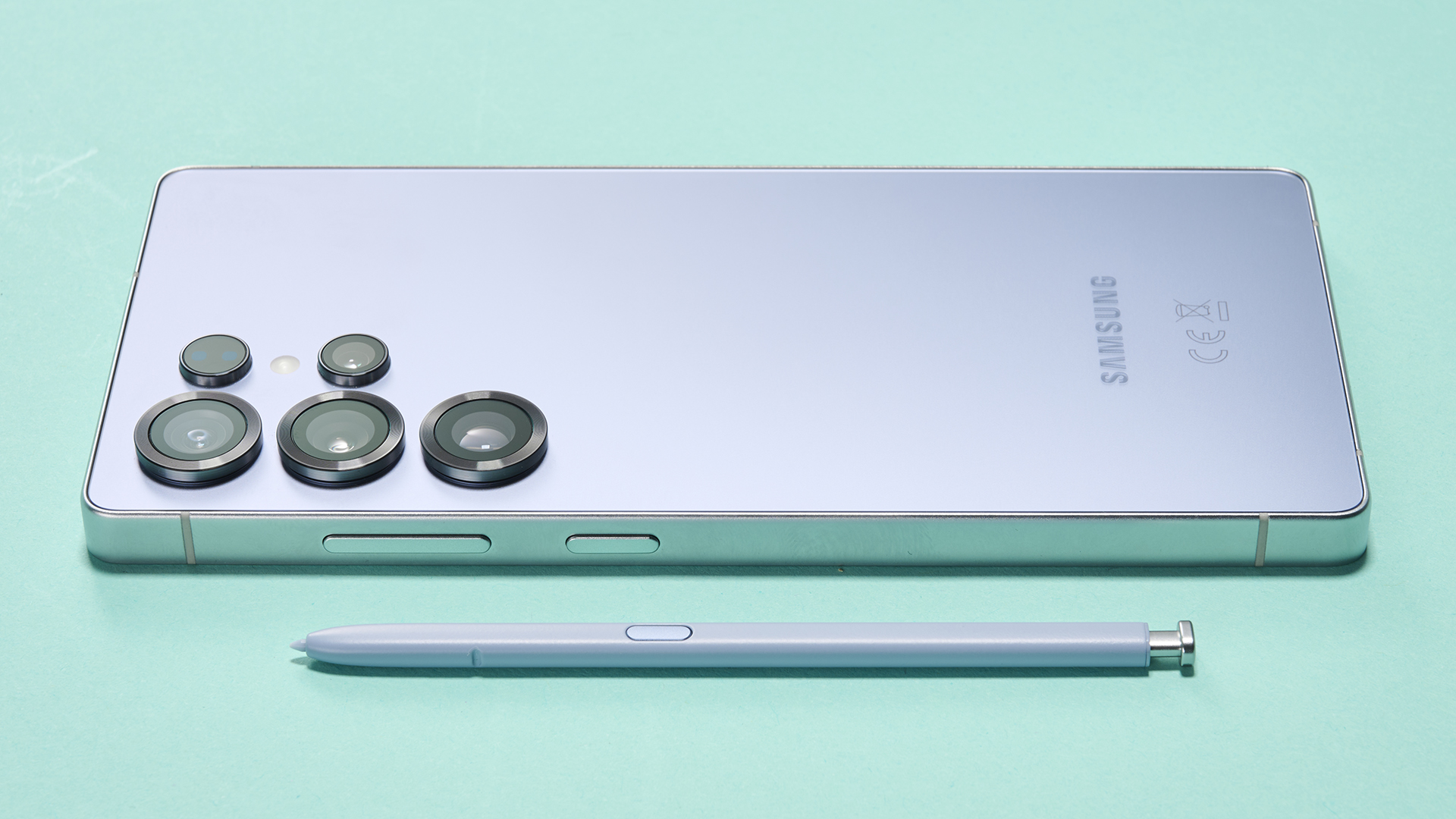

I've been reviewing the latest and best phones for over a decade now, so while there are many options to choose from, this Top 5 guide will help steer you towards the ideal handset for you.
First thing's first, though, you'll need to decide which ecosystem is for you: it's Apple on one side; or Google's Android on the other (with many makers offering different handsets under this operating system).
Given that our phones act as our do-everything devices – from the camera, to GPS tracking for maps and health, even for entertainment via the best streaming services– it’s important to really consider the priority features that matter to you most when picking your ideal phone.
Below, I've rounded up the current best smartphones you can buy in 2025, including a model from Apple, Samsung, Google, Nothing and OnePlus.
These are all tried-and-tested handsets, expert tested and reviewed, so you can trust T3's voice – or, if you're seeking one of the best cheap phones or best compact phones then we've got you covered.
T3's Top 3
22 October 2025: Condensed to a top 5 list. Updated to reflect the latest iPhone 17, Google Pixel 10 XL Pro and OnePlus 13 entries – logically replacing their predecessors. Alternative affordable Nothing device added. Older iPhone pick removed. Honourable mentions added. 3 July 2025: Updated to reflect T3 Awards' Best Phone of 2025, the Galaxy S25 Ultra. 4 February 2025: Updated to include the latest iPhone, Samsung Galaxy and newer OnePlus entries, while condensing the list to the best six handsets overall.

The best premium Apple phone is the iPhone 17 Pro (or Max if you want larger). The best iPhone for your money, it delivers super cameras with amazing stabilisation, a gorgeous design (now in orange!), and is undoubtedly a top-tier Apple device.

The best premium Android phone is the Samsung Galaxy S25 Ultra. With a gorgeous design, superb cameras, even an integrated S Pen stylus for added versatility, Android phones don't get any more sophisticated than this.

The best phone for most people is the Google Pixel 10 Pro (here in larger 'XL' scale). Great features, a distinctive design and accomplished cameras, Google's latest flagship is a super handset with excellent battery life.
Best premium iPhone

Specifications
Reasons to buy
Reasons to avoid
If you're looking for an Apple phone then this one is the best-of-best in the range. Introduced late 2025, the 17 Pro Max is the latest handset to bring the brand's latest unibody design to the series – which looks sublime and is even available in a burnt orange finish.
The Pro is our pick of the bunch, too, thanks to its smaller 6.3-inch screen (and price) compared to the larger Pro Max model (at 6.7-inch). As we said in our review: "The smaller of Apple’s two pro models is no longer subject to a lesser camera array. It does everything the Max does in a smaller form, and that is likely to suit some users better."
The other real standout feature to set the iPhone 17 Pro Max apart from the competition is its cameras array, which includes a new 4x optical zoom telephoto with astounding optical stabilisation and upgraded 48-megapixel resolution this time around. Add Apple Intelligence features and this is one all-round Apple success.
Read our full iPhone 17 Pro review to see if Apple's top handset is the right match for you
Best premium Android phone

Specifications
Reasons to buy
Reasons to avoid
The Samsung Galaxy S25 Ultra represents a step change for Samsung's biggest and best flagship: the flat-panel handset now has curved corners, an upgraded 50-megapixel wide-angle camera, and there are a host of new baked-into-the-system AI features to take on Apple and Google.
Year-on-year the price point doesn't increase, ensuring Samsung's top-tier phone remains competitive against its core competition. Despite this, however, camera improvements – upgrading the wide-angle to be 50MP and adding macro functions – see this Android handset sail ahead compared to many competitors.
Indeed, the Galaxy S25 Ultra is such a great success that in our review we quipped: "Phone of the year already?". It might well be, as the 'Best Phone' gong at T3's Awards last year went to its predecessor – and the S25 Ultra is only one better. How about that for credit?
Want to know more? Read our full Samsung Galaxy S25 Ultra review to decide if this is the top-end Android phone for you
Best phone for most people

Specifications
Reasons to buy
Reasons to avoid
Google's 2025 flagship, the Pixel 10 Pro XL, features astounding cameras that are easy to use and deliver great results in all conditions. There's Google's own fifth-gen processor on board, too, called Tensor G5, which is super-fast – although does throttle somewhat compared to the Qualcomm competition, as found in Samsung's Galaxy S25 Ultra.
Design-wise, Google's latest flagship – which also comes in a smaller 6.3-inch size than this 6.8-incher with the 'XL' badge – is about as close to an iPhone-alike as you can find in Android. But it looks great for it – and the display here is arguably the best you'll find, with masses of brightness and real pop.
That processor paired with a large on-board battery delivers super longevity per charge too, with Google taking a really balanced approach to this year's big boss. It doesn't have the fastest-charging ever, but that's okay given how long it lasts in one go anyway – you could get through two days on this battery!
Like the idea of Google's flagship being more affordable than most? Read our full Google Pixel 10 Pro XL review to learn more
Best affordable Android phone

This rising brand delivers stacks of camera for a smaller price
Specifications
Reasons to buy
Reasons to avoid
Nothing has been a rising star on the Android phone scene for some years now. Its appeal is clear: offering immense spec in handsets that are creatively designed, for a price point that's lower than the competition.
Case in point: the Phone (3a) Pro, which brings a 3x optical zoom lens to the party, in a way that no other veritable brand at this price point can compete with. Not only that, it's unique design is fun and the illuminating Glyph Lights on the rear can be programmed to give you visual prompts for specific notifications.
It has some quirks, such as the new Essential Key, which is poorly placed to trigger AI accidentally and too often, and the performance from its mid-tier processor isn't going to beat a flagship. But these are minor moans in what's otherwise the best handset of its kind.
As said in our review: "When you consider the Nothing Phone (3a) Pro has a massive periscope zoom camera, it's savvily positioned against the competition. With a price that undercuts Samsung's Galaxy A56 and Apple's iPhone 16e by far, it offers great value. The Pro feels like a grown-up package".
Check out our full Nothing Phone 3a (Pro) review to see if this affordable and camera-endowed handset is the Android phone for you
Best Android flagship alternative

A great affordable Android phone
Specifications
Reasons to buy
Reasons to avoid
OnePlus has risen through the ranks over the years, always offering seriously big specification for a not-so-big price point. In the OnePlus 13 that remains true – albeit for a marginally raised price.
However, the key point is that the OnePlus still undercuts the at-launch price of its key Samsung, Google, Apple and other rivals. That cash-saving can go a long way – especially with such an accomplished handset.
The OnePlus 13's stunning 6.82-inch screen kicks things off, acting as a major lure, but there are other headline-grabs such as the huge battery capacity, super-fast charging and flagship Qualcomm chipset.
Note that the newer OnePlus 15 is expected, but that may only help to squeeze down the OnePlus 13's price yet further, giving it year more appeal.
Check out our full OnePlus 13 review to read why we think it's a great Android pick
How to choose
Choosing the right phone is no easy task, as there are so many on the market and, truth be told, many of them are very similar. There are some core questions you should ask yourself before pulling the trigger on a smartphone upgrade, though.
Firstly, you need to establish if you're going to buy the phone SIM free (as in buy the phone outright upfront) or on contract. Both these options have their own strengths and weaknesses.
For example, buying a phone outright, and especially if it is a premium handset, can cost a lot of money, so you need to be able to swallow that. Once the phone is bought, though, then it is yours and you can go about getting one of the best SIM only deals, which offer better allowances for less money.
On contract purchases are great in the sense that they often put the phone in your hand for comparatively very little money or even for nothing, but then you need to pay for the phone over the period of your contract, which is tied to a network SIM plan that, most of the time, doesn't offer as good allowances or value as a SIM only one.
Next up you should ask yourself what you budget is, and what you're primarily going to be using the phone for. If you're a gamer then you're going to need to ensure you have a phone with good gaming functionality, while if you're a creative then you could benefit from a phone with digital stylus support. Equally, if you love taking photos then you need to prioritise a phone with a great camera system, while if you're a massive streamer then bagging a phone with a large screen is smart. If you're a busy working professional who travels a lot, then you'll want a phone with a large battery.
Once you've identified your needs and budget you can start to get more granular with your sorting. Next up we'd suggest identifying which OS and phone platform is right for you. The two main ones are Apple's iOS, which runs on all the maker's iPhones, as well as Android. iOS tends to be better for people who don't have too much technical knowledge and just want a streamlined, heavily guided usage experience, while Android is more open and complex.
Finally, once OS is decided start to add or take away features that you need or don't. For example, reverse wireless charging is really neat, but not every user will need it or use it, while phones that comes with huge amounts of RAM or storage may be useful for enthusiasts, but would go unused by many others. 5G connectivity is great and it is the future, but if you live in an area where there is no 5G coverage then do you really need a 5G phone?
These are just a few of the things we recommend people consider before buying a new phone, but we feel that providing each person does their research well (something this buying guide can help with), there's an ideal mobile for everyone.
How we test
There's a lot to consider when reviewing one of today's best phones, and for T3 we have a detailed five-stage process that each new device goes through.
Firstly, we judge the phone from a build quality and fit and finish point of view, as well as how comprehensive its package is. This stage is very much ascertaining how a phone feels in the hand, how robust it looks and what extras it does or doesn't come with. If a phone has a cheap plastic backplate and a spongy screen then we'll find out and let you know.
Next up we review the phone from a setup and hardware point of view. This stage sees us set up the phone as we would if it were our own, as well as examine exactly what hardware it comes with, such as its processor, RAM, storage and GPU, among other things. The goal here is to see how accessible setup is and what, on paper, your money is buying you.
Thirdly, we then move onto the phone's software and highlight features. So, for example, on Android we test out how good the phone maker's user interface skin is, as each one if definitely not made equal. Or, for example, if testing a new Galaxy Note phone, we'll absolutely test out its digital stylus. We also test features like biometric security, fingerprint readers and reverse wireless charging.
Our forth stage of testing is dedicated purely to the phone's camera system, as truth be told they are one of the most important parts of a phone today and a primary reason why people choose one model over another. This stage involved taking photographs with the phone and testing out each of its main shooting modes, as well as analysing what video capabilities are on offer, too.
Lastly, we then consider each phone from a purely experiential point of view – as in, how is it like to use on a daily basis? This is a really important part of our testing as it strips away all the technical jargon and components and is just intended to reveal how good it is use. This procedure takes one to two weeks and often also encompasses battery testing.
Only then, when all five of these phone review procedures are complete, do we award a score to a phone, with 5 stars been the highest rank a product can get.
Reviewer panel

I've been testing the best phones on the market for over a decade, from Android to iPhone (and beyond, back in the day – remember Windows Phone?), so know heaps about which handsets are best and for whom. I change phones every fortnight and have seen hundreds of models over the years.

The big boss at T3, Mat has been covering tech, cars and travel content for umpteen years – and is the site's resident iPhone reviewer, having seen all the latest and greatest Apple handsets. Those are critical products when it comes to the best phones, with a big market share – so entertain much of T3's review time.

Basil is T3's resident phones guru. He's often not only testing one or two handsets, but many multiples at a time for true comparison. He's particularly familiar with many of the Chinese phone-makers, from Xiaomi to OnePlus and beyond, where his expertise extends beyond the typical phone-tester.
Get all the latest news, reviews, deals and buying guides on gorgeous tech, home and active products from the T3 experts

Mike is T3's Tech Editor. He's been writing about consumer technology for 15 years and his beat covers phones – of which he's seen hundreds of handsets over the years – laptops, gaming, TV & audio, and more. There's little consumer tech he's not had a hand at trying, and with extensive commissioning and editing experience, he knows the industry inside out. As the former Reviews Editor at Pocket-lint for 10 years where he furthered his knowledge and expertise, whilst writing about literally thousands of products, he's also provided work for publications such as Wired, The Guardian, Metro, and more.